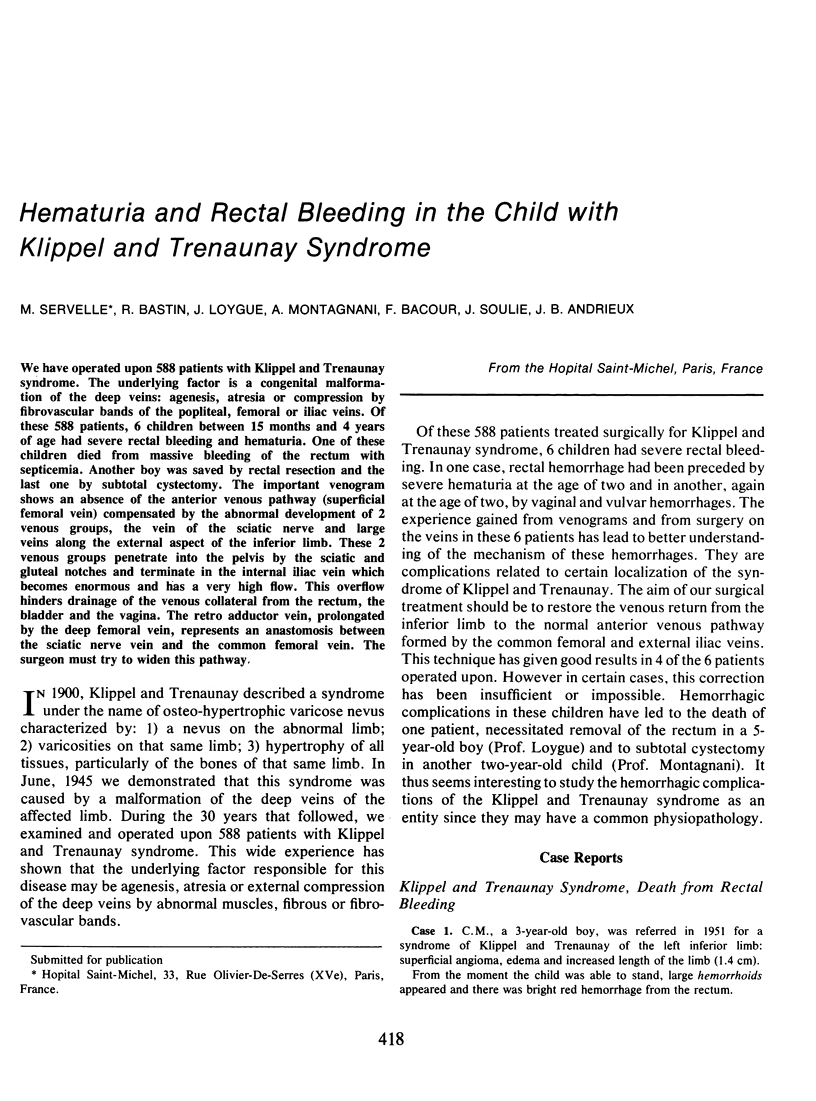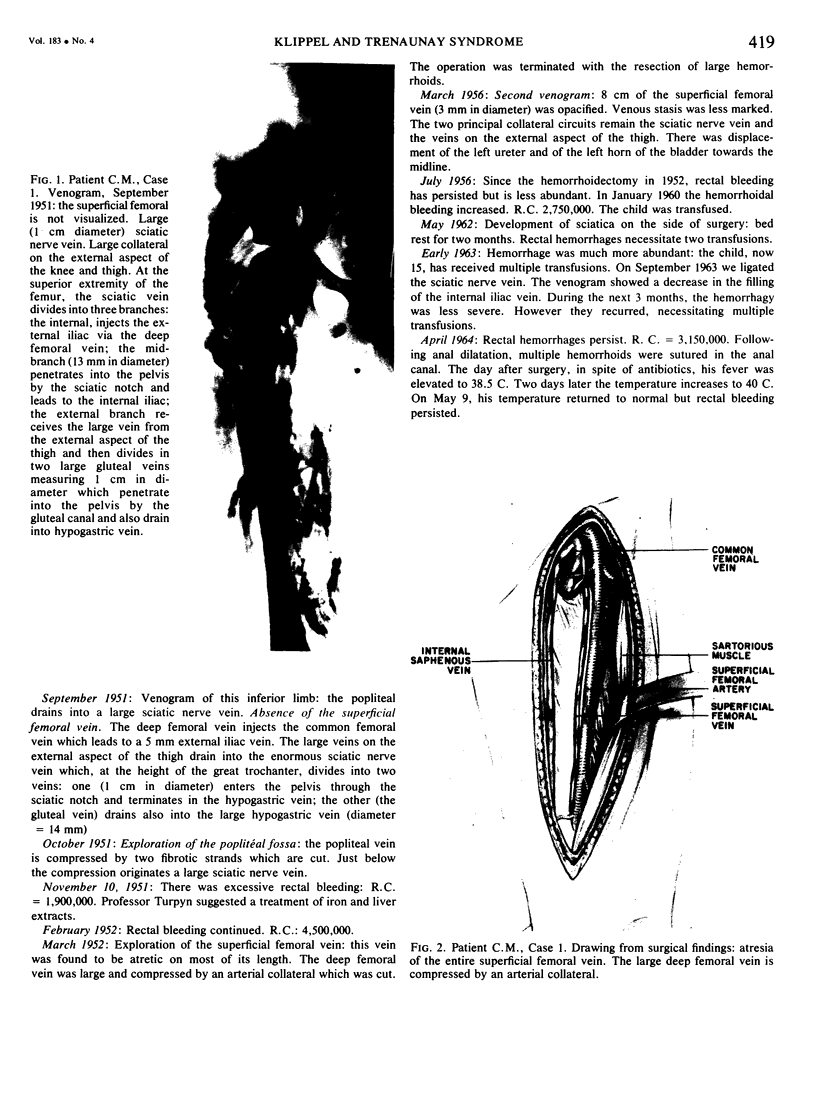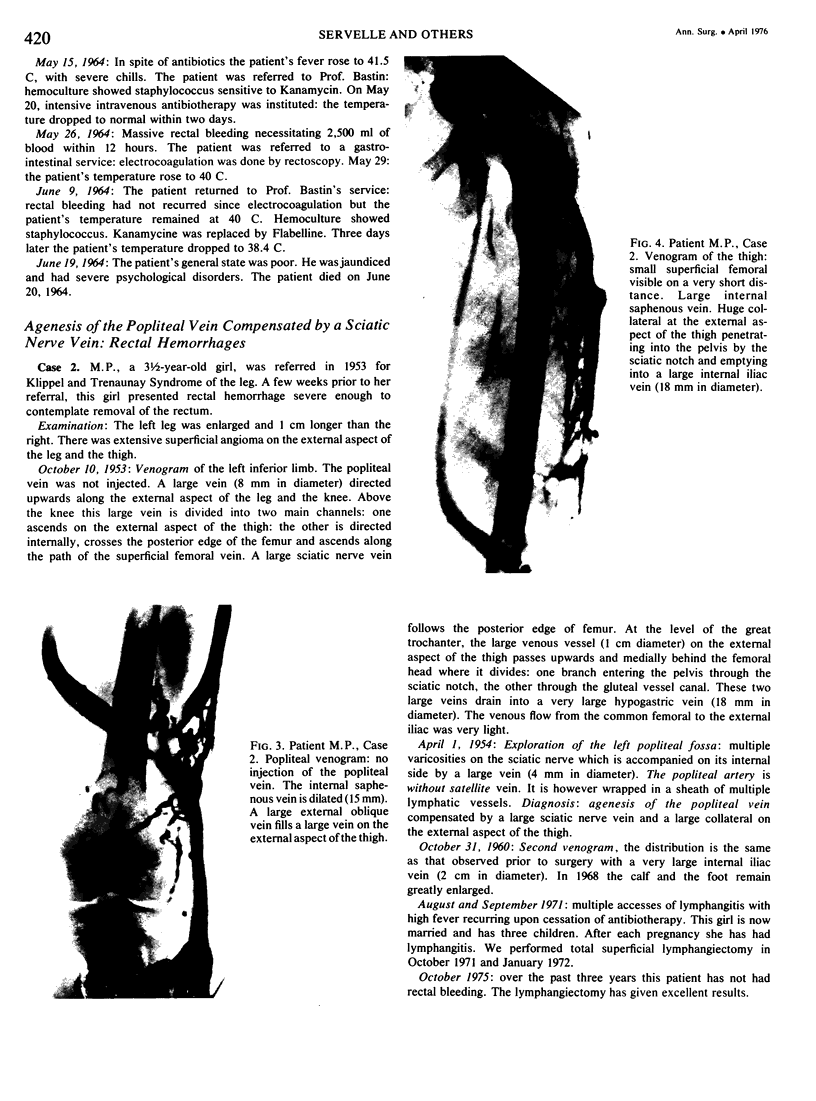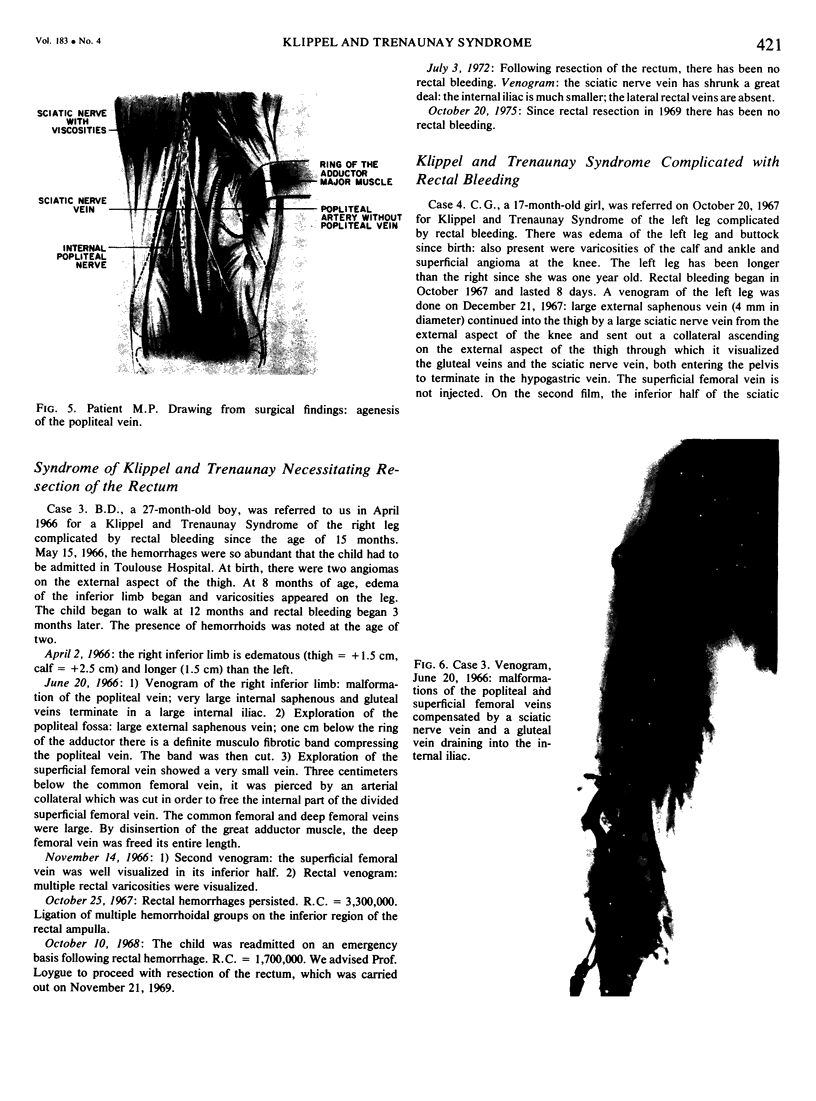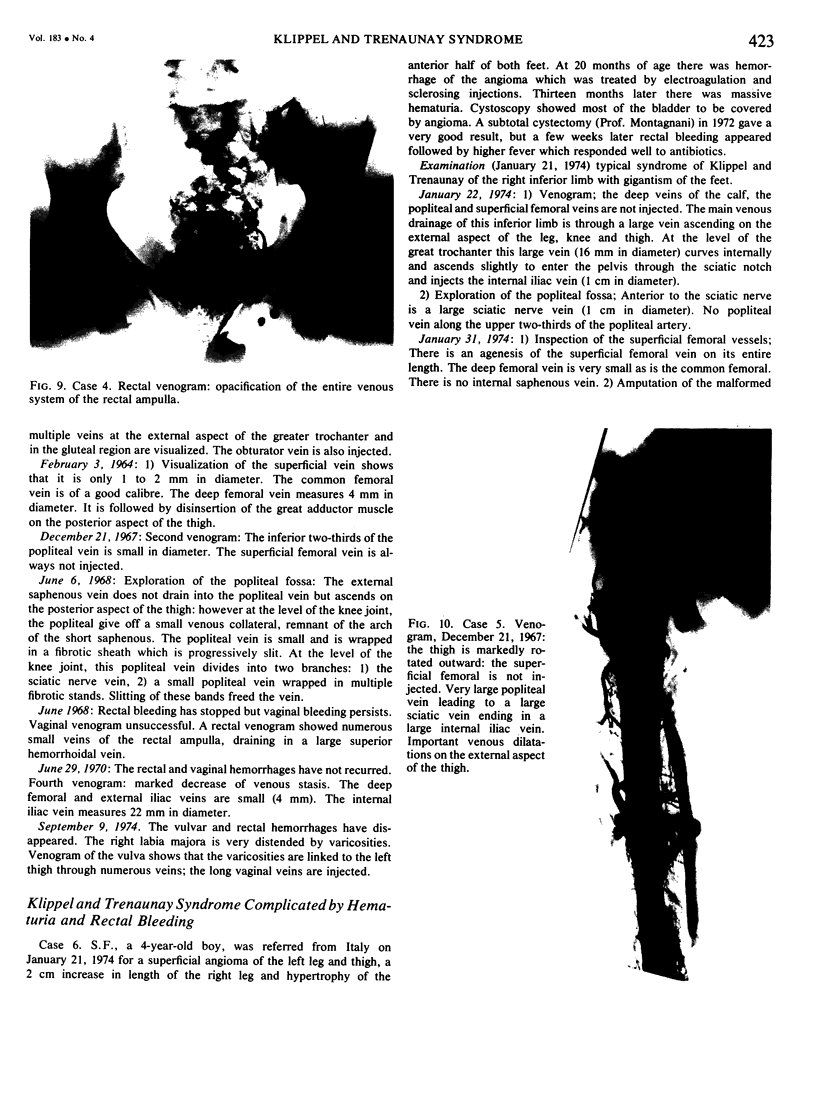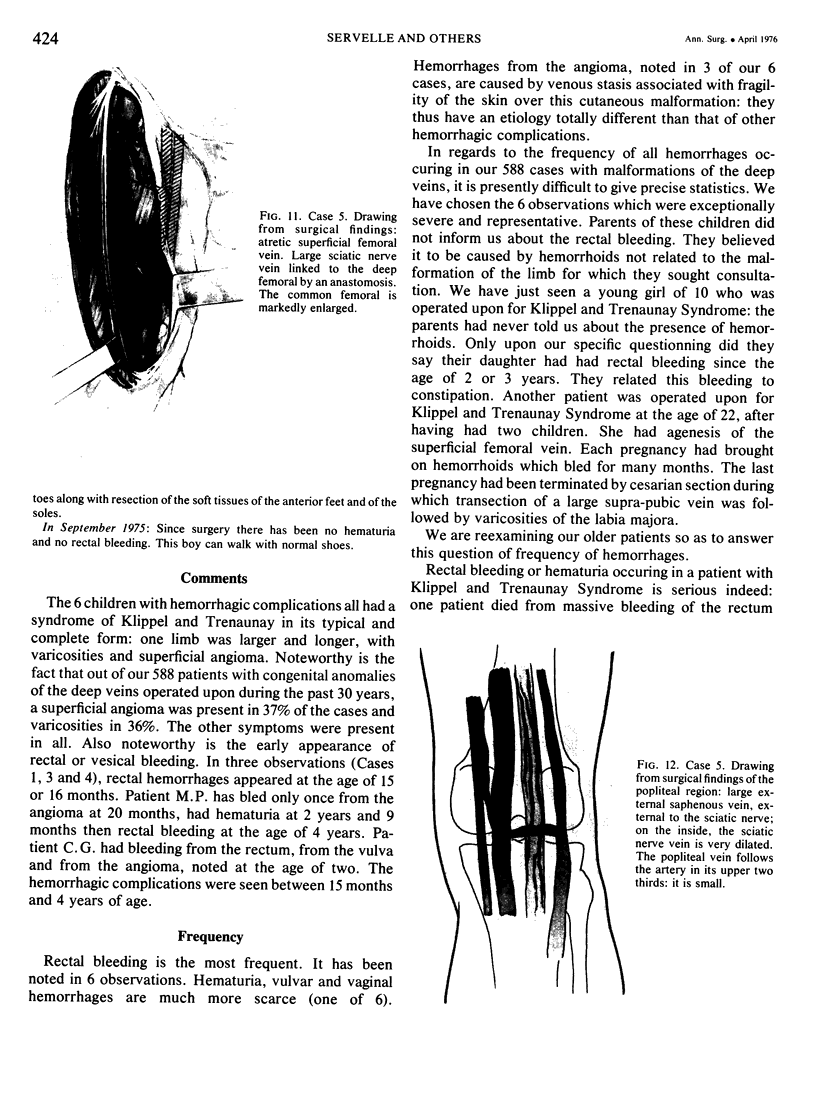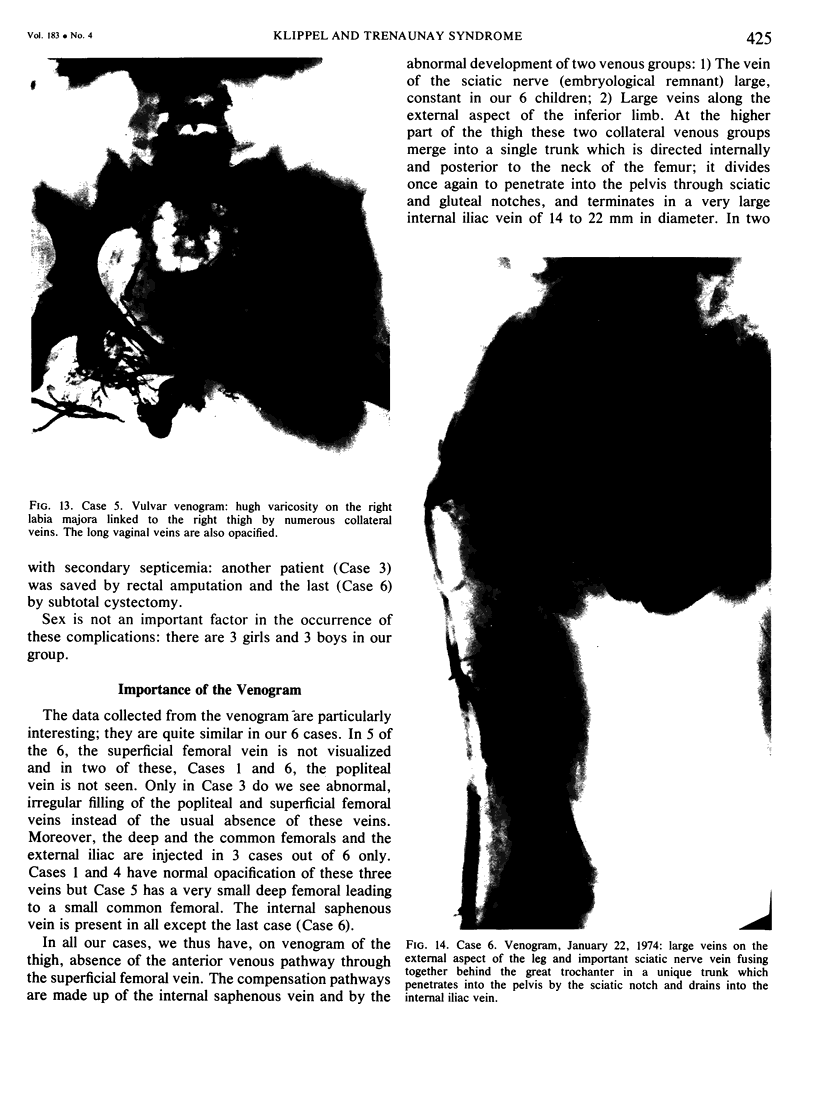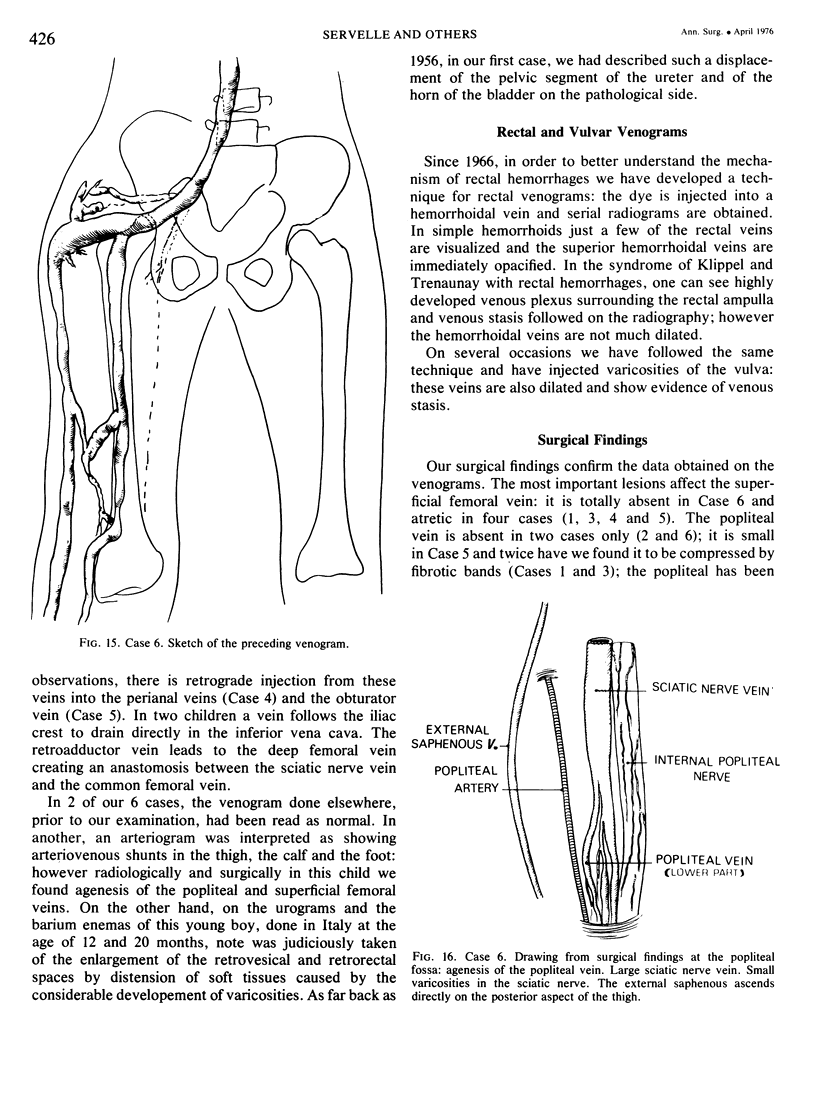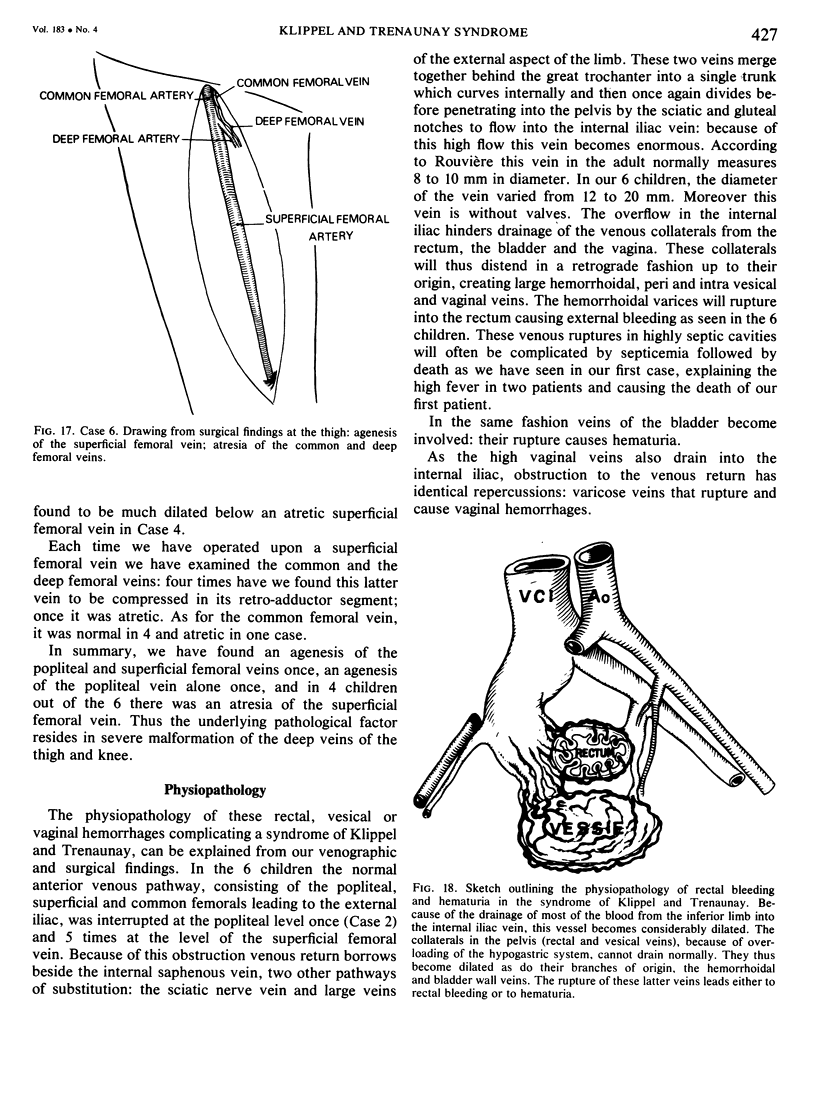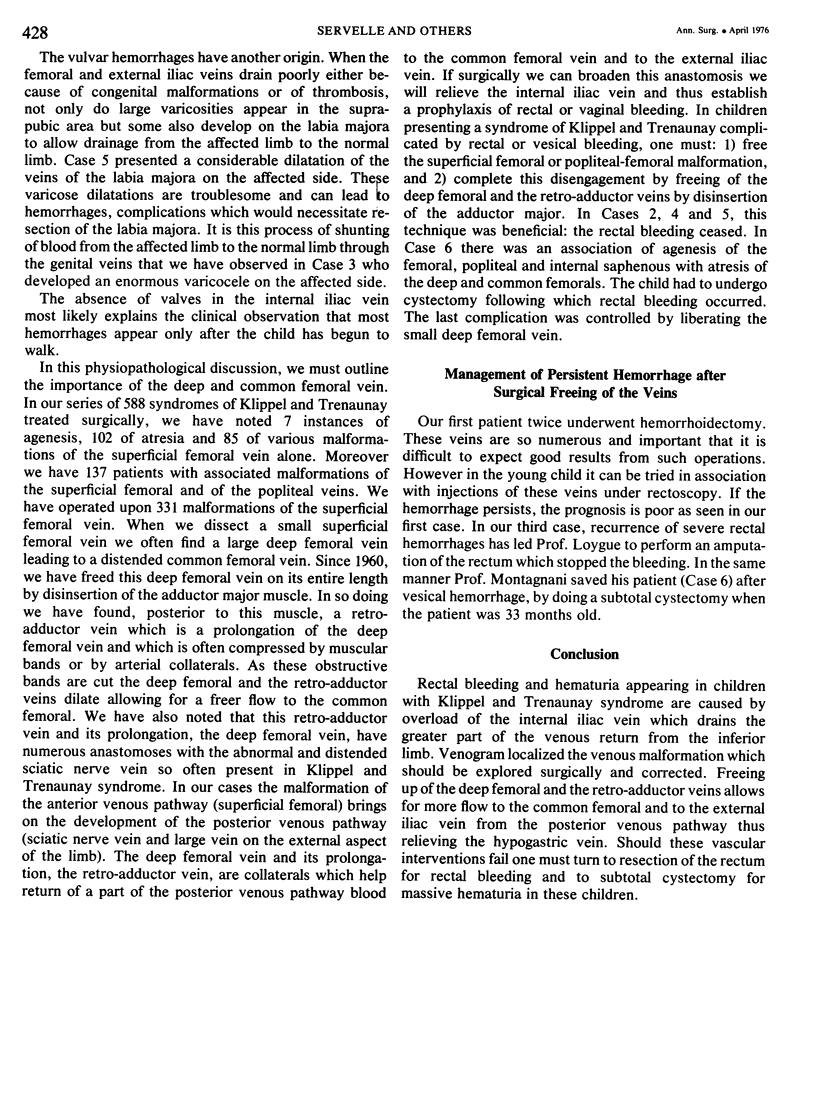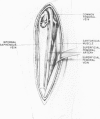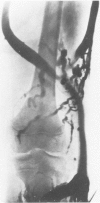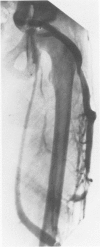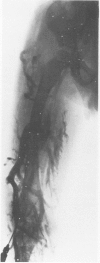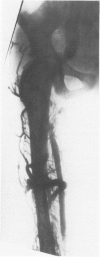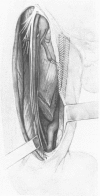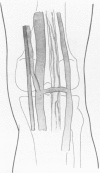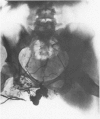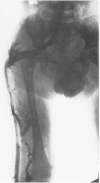Abstract
We have operated upon 588 patients with Klippel and Trenaunay syndrome. The underlying factor is a congenital malformation of the deep veins: agenesis, atresia or compression by fibrovascular bands of the popliteal, femoral or iliac veins. Of these 588 patients, 6 children between 15 months and 4 years of age had severe rectal bleeding and hematuria. One of these children died from massive bleeding of the rectum with septicemia. Another boy was saved by rectal resection and the last one by subtotal cystectomy. The important venogram shows an absence of the anterior venous pathway (superficial femoral vein) compensated by the abnormal development of 2 venous groups, the vein of the sciatic nerve and large veins along the external aspect of the inferior limb. These 2 venous groups penetrate into the pelvis by the sciatic and gluteal notches and terminate in the internal iliac vein which becomes enormous and has a very high flow. This overflow hinders drainage of the venous collateral from the rectum, the bladder and the vagina. The retro adductor vein, prolongated by the deep femoral vein, represents an anastomosis between the sciatic nerve vein and the common femoral vein. The surgeon must try to widen this pathway.
Full text
PDF